We remember the time when we were waiting for Magento 2 release and were so excited when it happened. Magento team put a lot of effort into that release and delighted us with new improvements. Since that time, many store owners come curious to know if they should migrate the store from Magento 1 to Magento 2 and if so – when it should happen.
So, we’ve made a research on what have been added or changed in Magento 2 in comparison with Magento 1 to collect more information for our clients when they ask us the question: “to be or not to be” with Magento 2. In this article you will find the main changes and improvements overview.
Magento 2 performance improvements
We start with performance improvements for Magento 2 because it is one of the main issues that store owners have on Magento 1. Therefore, we often do Magento performance audits to find the ways for every store individually to optimize the performance and make that store faster.
1. It is worth mentioning that Magento 2 officially supports latest PHP versions (starting from PHP 5.5.x), including PHP 7. Those versions already include new security fixes and improvements that directly affect web store’s speed.
In one of our articles we’ve already described the benefits of running Magento with PHP 7.
And for sure, we strongly recommend using PHP 7 when building Magento 2 stores.
2. On the server’s side, there is a very welcome Magento 2 improvement – the ability to use Varnish caching out of the box, so store owners will not have to install a third party’s module for that.
3. Magento 2 has minimized and bundled JavaScript. Finally, we have modern solutions from the JS perspective that allow to reduce unnecessary browser’s operations on the client’s side.
4. Images compression – now it is possible to optimize images directly on server using Magento 2 built in tools. In Magento 1, we had to do it manually.
5. Improved process of browser caching for static content.
Magento 2 admin panel
In comparison with Magento 1, the admin panel in Magento 2 is much more user friendly and intuitive.
We will describe the main changes in the admin panel here and you will be able to find a more detailed overview in our future articles.
1. Modern admin panel navigation interface. It allows to easily navigate to all parts of the admin panel, find information easier and manage your store more efficiently.
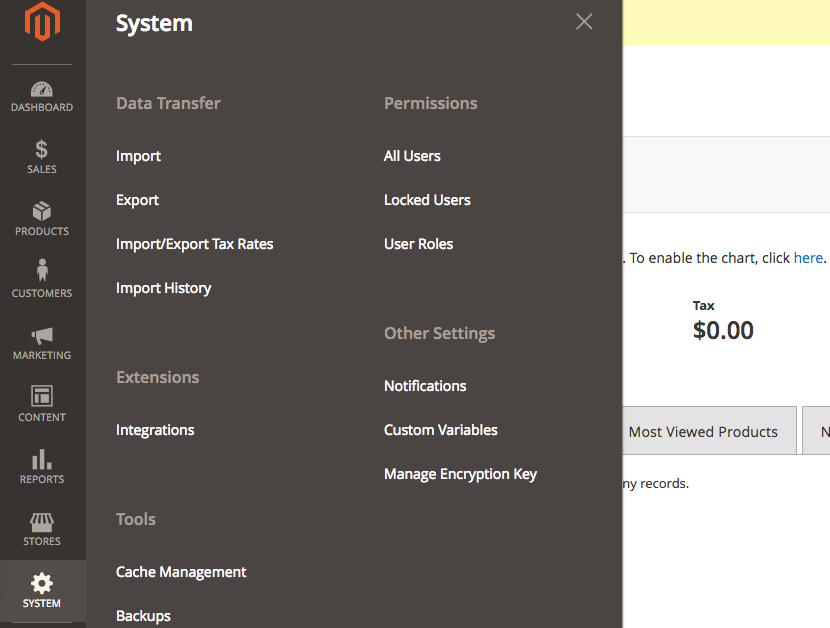
2. Magento 2 Dashboard shows Lifetime Sales, Average Order, Last Orders, Last and Top Search Terms – that helps to monitor your current state of business.
Also, there you can see your Revenue Tax, Shipping and Quantity, check Bestsellers and Customers.
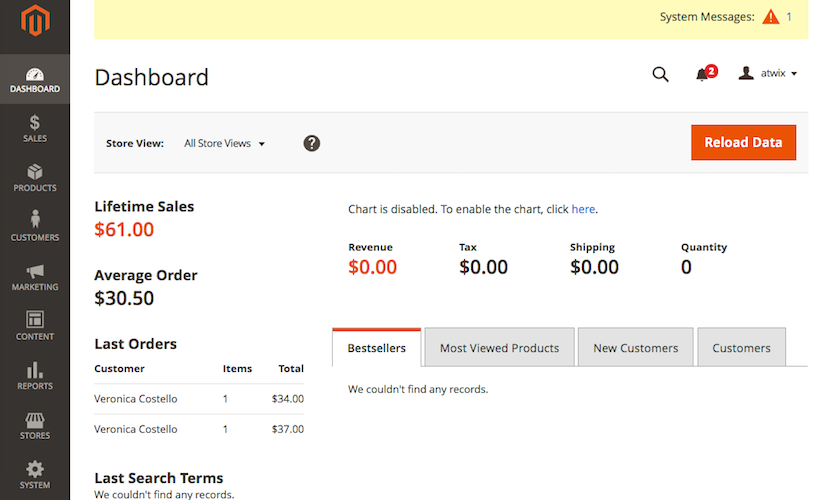
3. New step-by-step product creation tool that makes new products upload easier. Now you can also link videos to your products in addition to the images.
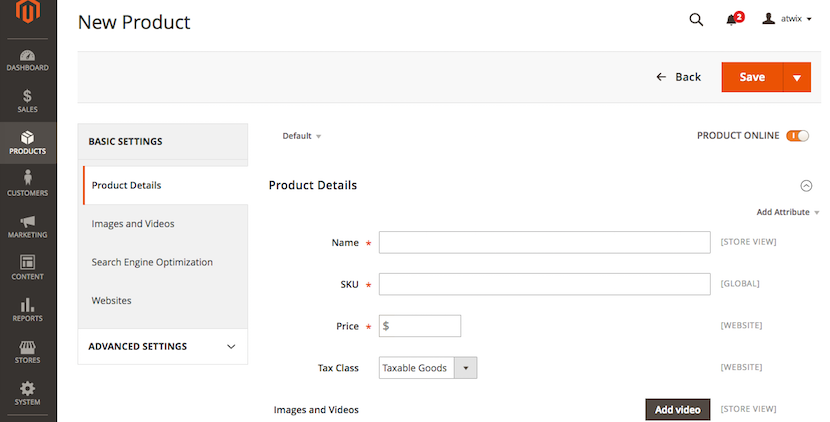
4. What is also good is that with Magento 2 you do not need to contact your developers every time you want to add or remove the columns on the orders or customers management grid, you can simply choose the required columns from the available list in the admin panel.
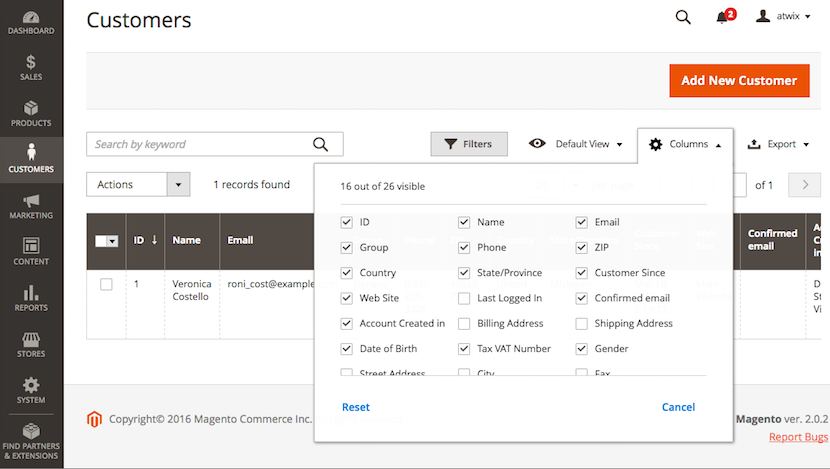
5. Improved and faster product data import.
6. In new Marketing section you can find all already known tools from Magento 1 to work with Promotions, User Content, Communications, Magento SEO & Search – all you need to keep your current customers loyalty and promote your store.
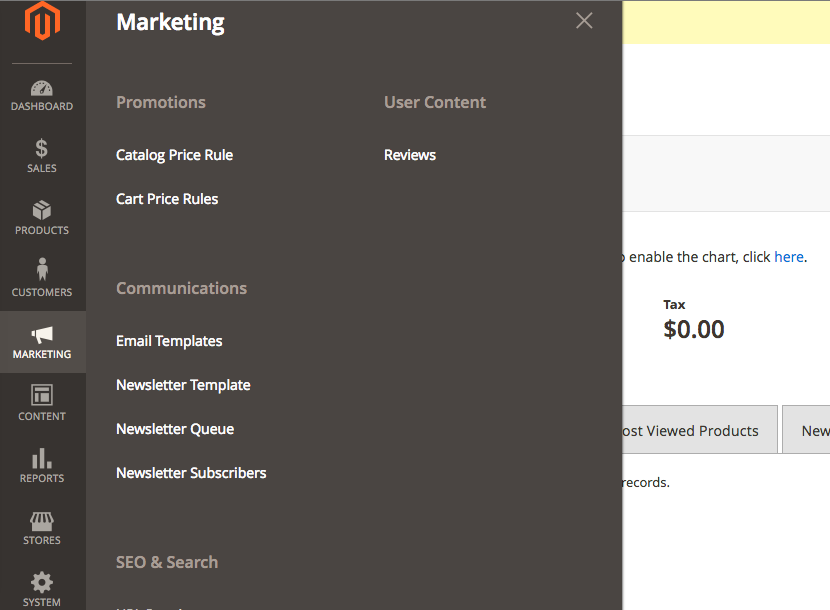
7. Fill in all information about your company and store itself with new improved Content section.
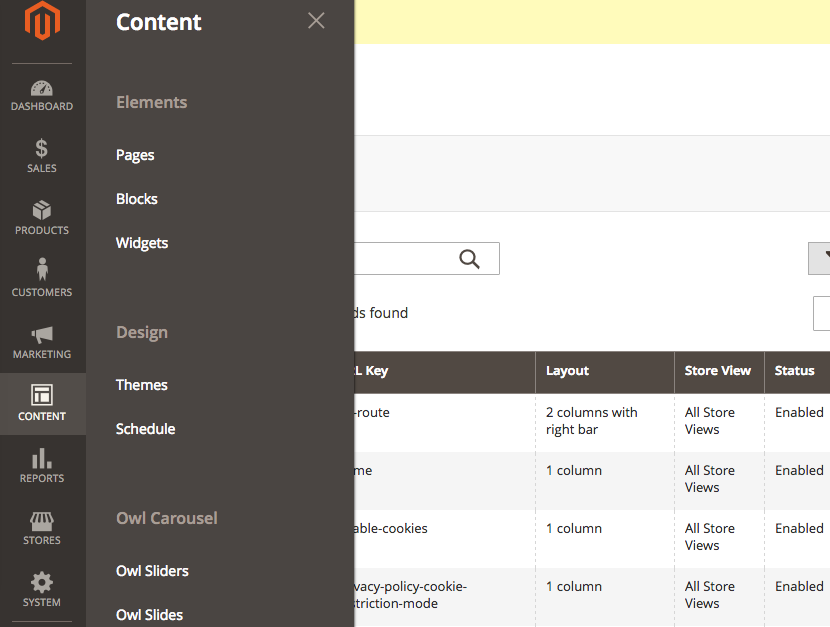
8. The last, but not least in this section is the Data Migration Tool – using this tool you can transfer your Magento 1 data to Magento 2 faster.
We’ve described only few of the most visible changes. Try to work with new Magento 2 admin panel and you will see how good it is in comparison with Magento 1.
Magento 2 Frontend
We’ve already found that admin panel in Magento 2 got some nice improvements, but what about Magento 2 frontend? Is the UI/UX better? Is it easier to work with the default theme now?
Here is what we have with Magento 2:
1. The new Magento 2 Luma theme looks much better than the default Magento 1.

2. Responsive web design – users can easily access the store via any desktop or mobile device. Remember that starting from April 21st, 2015 Google grants higher ranking in search results for mobile-friendly stores (https://support.google.com/adsense/answer/6196932?hl=en).
3. Faster frontend performance. Website visitors will not have to wait for full page load to see the primary content.
4. Magento one page checkout steps have been improved and now it is easier for users to navigate. Magento guest checkout is allowed (if this feature is set to “yes” in the admin panel) and Magento 2 can automatically find the existing registered customers by analyzing their email address.
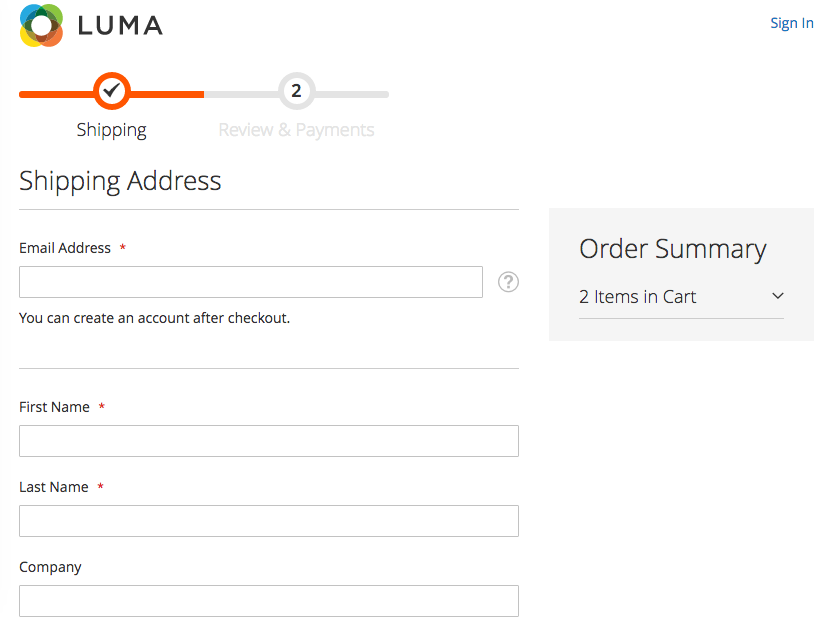
5. Simplified registration process during one step checkout – in Magento 2 customers are able to create an account on the Magento checkout success page.
6. Order details list the shopping cart with all products, their qty and subtotal as well as images. This allows customers to see what they’ve ordered in a more clear way.
7. Billing information of the customers is sent from the website directly to the payment gateway, which is a secure way. Magento 2 includes PayPal, Braintree, Authorize.net, WorldPay and few other payment methods out of the box.
SEO and Security
1. Strengthened hashing algorithms (SHA-256) for passwords.
Passwords are now more resilient to the dictionary types of attacks.
2. Magento 2 rich snippets on the catalog pages allow to improve search result look in search engines. However, we’ve improved the default functionality with our Magento 2 Rich Snippets extension.
The nearest future for Magento 2
1. Magento Marketplace. Magento has announced the release of the Marketplace, where you can find extensions that are available for Magento 2.
2. Magento 2.1 release is planned for June 2016, B2B Module is coming in Q3 2016.
3. Magento Enterprise Cloud Edition – the new PaaS solution with Magento 2.0 hosted by Magento itself.
As you can see, Magento 2 grows every day and becomes more and more popular. It has many improved features that are quite useful. While Magento 1 Merchants still think about migration and wait for new announcements to finally make that decision, development companies are creating more and more extensions for Magento 2.
Meanwhile, Magento 1 is still popular and, consequently, it will be supported by Magento until November 2018. Of course, the support is mostly related to security patches and important fixes, no new features or improvements are coming for Magento 1 anymore. All Magento’s workforce is now concentrated on Magento 2 development and growth.
From our side, we can say that Magento 2 is a huge improvement for both Merchants and Magento Developers. Migration from Magento 1 to Magento 2 surely takes some time and if you’d like to follow the progress, it is about time to at least start planning it.
You may also be interested in: